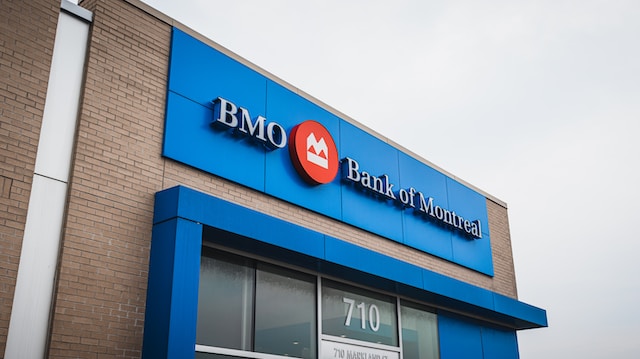In today’s digital age, online banking has become a convenient and popular option for both consumers and banks in the United States. With just a few clicks, customers can check their account balances, transfer funds, pay bills and even apply for loans – all from the comfort of their own homes. Banks also benefit from reduced overhead costs associated with brick-and-mortar branches while offering 24/7 customer service. However, as with any financial transaction conducted over the internet, there are pros and cons to consider for both parties involved. In this blog post, we will explore these advantages and disadvantages of online banking for consumers and banks alike in the U.
S., as well as provide tips on how to choose the right online bank whilst ensuring your personal information is kept secure.
Online banking in the United States
Online banking is the practice of managing your financial transactions electronically, using the internet. In the United States, online banking has become increasingly popular in recent years due to its convenience and accessibility. It allows customers to access their accounts from anywhere at any time through a secure portal.
According to a study by Statista, more than 71% of U.
S. adults use online banking services as of 2021. This trend can be attributed to several factors such as easy account management, reduced paper waste and real-time notifications for security purposes.
Online banks offer competitive interest rates on savings accounts and low fees compared to traditional brick-and-mortar banks which make them an attractive option for consumers looking for cost-effective banking solutions.
In addition, online banks are also known for providing excellent customer service with round-the-clock support available through phone or chat – making it easier than ever before for consumers in need of assistance anytime they require it.
Online banking has significantly improved how Americans manage their finances while offering greater flexibility and accessibility that suits modern lifestyles perfectly.
Advantages and disadvantages of online banking for consumers
Online banking has become increasingly popular among consumers in the United States due to its convenience and accessibility. There are several advantages of online banking for consumers, such as 24/7 access to their account information from anywhere with an internet connection. This allows customers to check their balances, view transaction history, transfer funds, pay bills and more at any time without having to visit a bank branch.
Another advantage of online banking is that it saves time and money by eliminating the need for physical visits to the bank or ATM. Customers can perform transactions quickly and easily from their computer or mobile device without having to waste time waiting in line or driving to a physical location.
However, there are also some disadvantages associated with online banking for consumers. One major concern is security breaches which could lead to identity theft or financial fraud. Consumers must be vigilant about protecting their personal information by using strong passwords and avoiding phishing scams.
Additionally, not all banks offer the same level of customer service through their online platforms compared to traditional brick-and-mortar branches. Some customers may feel more comfortable speaking face-to-face with a banker when addressing issues related to their accounts rather than relying on phone support or chatbots.
While there are both pros and cons associated with online banking for consumers, it ultimately depends on individual preferences and needs when selecting a preferred method of managing finances.
Advantages and disadvantages of online banking for banks
Advantages and disadvantages of online banking for banks
Online banking is not only beneficial for consumers, but it also has its advantages and disadvantages for banks. Here are some points to consider:
Advantages:
– Cost-effective: Banks can save on operational costs by offering online banking services, as they don’t need to maintain physical branches or hire additional staff.
– Increased customer base: Online banking allows banks to reach out to a wider audience outside their local area or region, which can help them expand their customer base.
– Improved efficiency: By providing customers with access to various digital tools such as mobile apps and online portals, banks can streamline their processes and improve operational efficiency.
Disadvantages:
– Security risks: With the rise in cyber threats, there’s always a risk of data breaches or unauthorized access to sensitive information stored on the bank’s servers.
– Technical issues: Customers may face technical glitches while using digital platforms that could affect their trust in the bank’s service quality. This could lead them towards choosing another financial institution over time.
– Lack of personal interaction: Since most interactions take place digitally through chatbots or virtual assistants; this could limit human interaction between bankers and clients which might affect consumer loyalty.
While there are pros and cons of offering online banking services from the perspective of financial institutions; however these must be properly weighed based on one’s specific goals before deciding whether an investment in digital technology would be right.
How to choose the right online bank
Choosing the right online bank is crucial to ensure a smooth and secure banking experience. Here are some factors to consider:
1. Reputation: Choose an established and reputable online bank with a good track record of customer satisfaction.
2. Fees: Compare the fees charged by different banks for services such as ATM withdrawals, overdrafts, and monthly maintenance.
3. Accessibility: Check if your preferred online bank has a mobile app that allows you to access your account anytime, anywhere.
4. Services offered: Determine which services are important to you, such as bill payment or investment options, and choose a bank that offers them.
5. Security measures: Research the security features provided by each online bank, including two-factor authentication and encryption protocols.
6. Customer support: Look for an online bank that provides reliable customer support through phone or chat in case you encounter any issues or have questions about their services.
Choosing the right online bank involves careful consideration of several factors unique to each individual’s needs and preferences, so take your time when making this decision!
Online banking security
Online banking security is one of the major concerns for both consumers and banks. With the increasing number of cyber threats, it’s essential to ensure the safety of personal and financial information online.
Banks use various methods to secure their online banking systems, including encryption technologies that protect sensitive data from hackers. Additionally, many banks have implemented two-factor authentication, which requires users to enter a unique code in addition to their login credentials.
Consumers can also take precautions when using online banking services. One way is by creating strong passwords that are difficult for hackers to guess. Another method is avoiding public Wi-Fi networks when conducting financial transactions as these networks may not be secure.
It’s important for consumers and banks alike to stay up-to-date with emerging security threats and implement measures accordingly. By doing so, they can reduce the risk of fraud or unauthorized access to confidential information.
While there are risks associated with online banking security, taking necessary precautions can help mitigate them and provide a safe and convenient means of accessing financial services.
Conclusion
To sum up, online banking is a convenient and efficient way to manage finances for both consumers and banks in the US. Consumers can enjoy easy access to their accounts, 24/7 customer support, and a variety of financial services all from the comfort of their own home or on-the-go. Banks benefit from decreased operational costs, increased customer satisfaction, and greater potential for growth.
However, with these benefits come certain drawbacks such as potential security risks and limited face-to-face interaction with bank representatives. It is important for consumers to carefully research online banks before selecting one that meets their needs while also ensuring that they take necessary precautions to protect themselves against fraud or other security threats.
Online banking has become an integral part of the US financial system and offers numerous advantages that make it well worth considering as an option for managing your finances. With proper care and attention paid towards safety measures by both consumers and banks alike, the future of online banking looks bright indeed!










